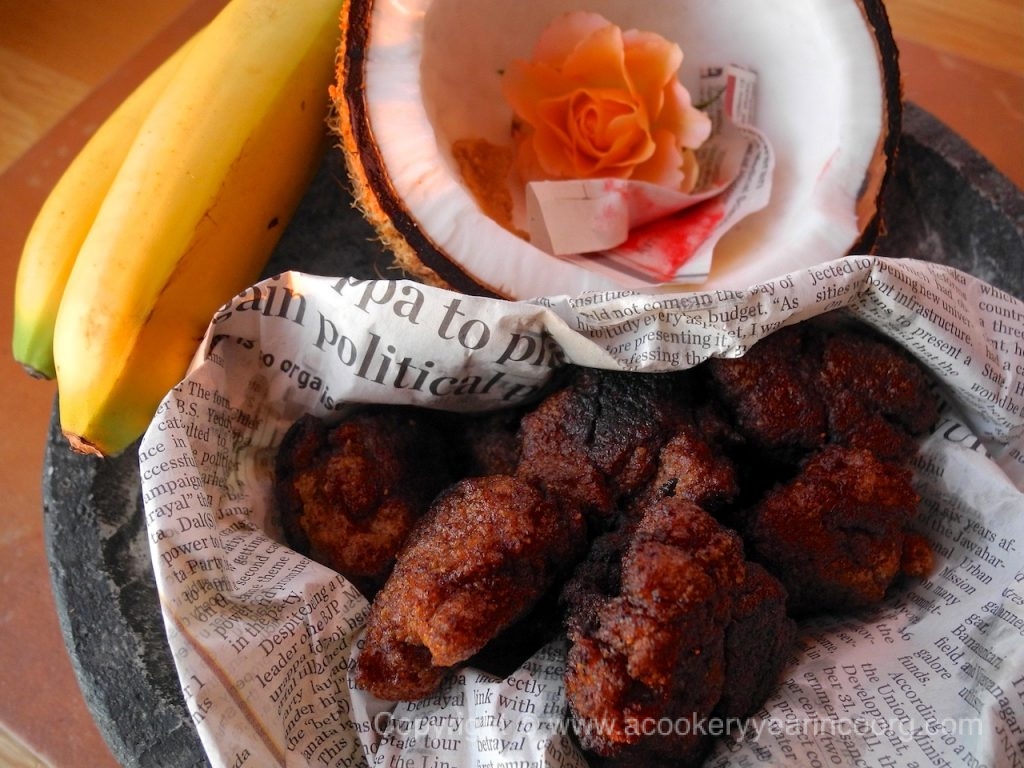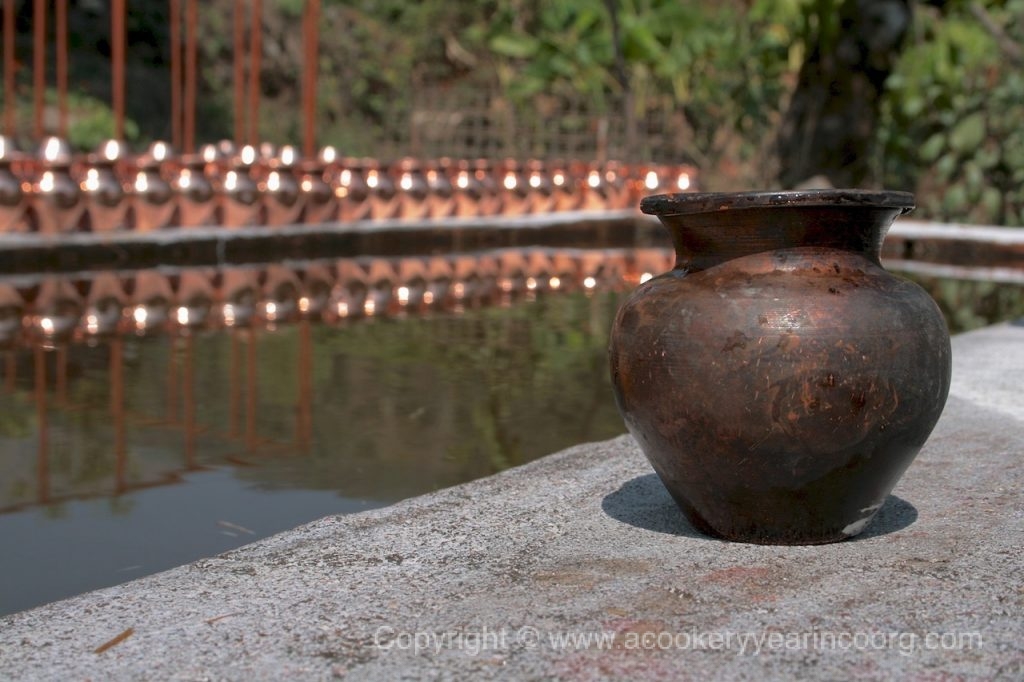There is something very special about the kajjayas given as prasada at the Iguthappa temple. The ingredients are simplicity itself – rice flour (made from soaked, dried and powdered rice) cooked in jaggery syrup, and bananas. And yet, they come together with a certain je ne sais quois.
No matter how delicious the versions made at home are, these remain unique in their appeal. Perhaps if you could capture the scent of wood smoke, freshly cracked coconuts, sandalwood, camphor and sampigé (Magnolia champaca), then shake them all together with a dash of cool, clean air and brilliant blue skies, topped with a large dose of serenity, you might come close. But some things are just best enjoyed at the source.
Of the various fried sweets made from a foundation of rice flour and jaggery, there is a small subset that falls into the category of kajjaya. Subtle variations set them apart, but they are essentially fried dumplings or small cakes made from ground rice and jaggery with a few added ingredients like bananas and coconut, sesame or poppy seed, and spices like cardamom or fenugreek.


